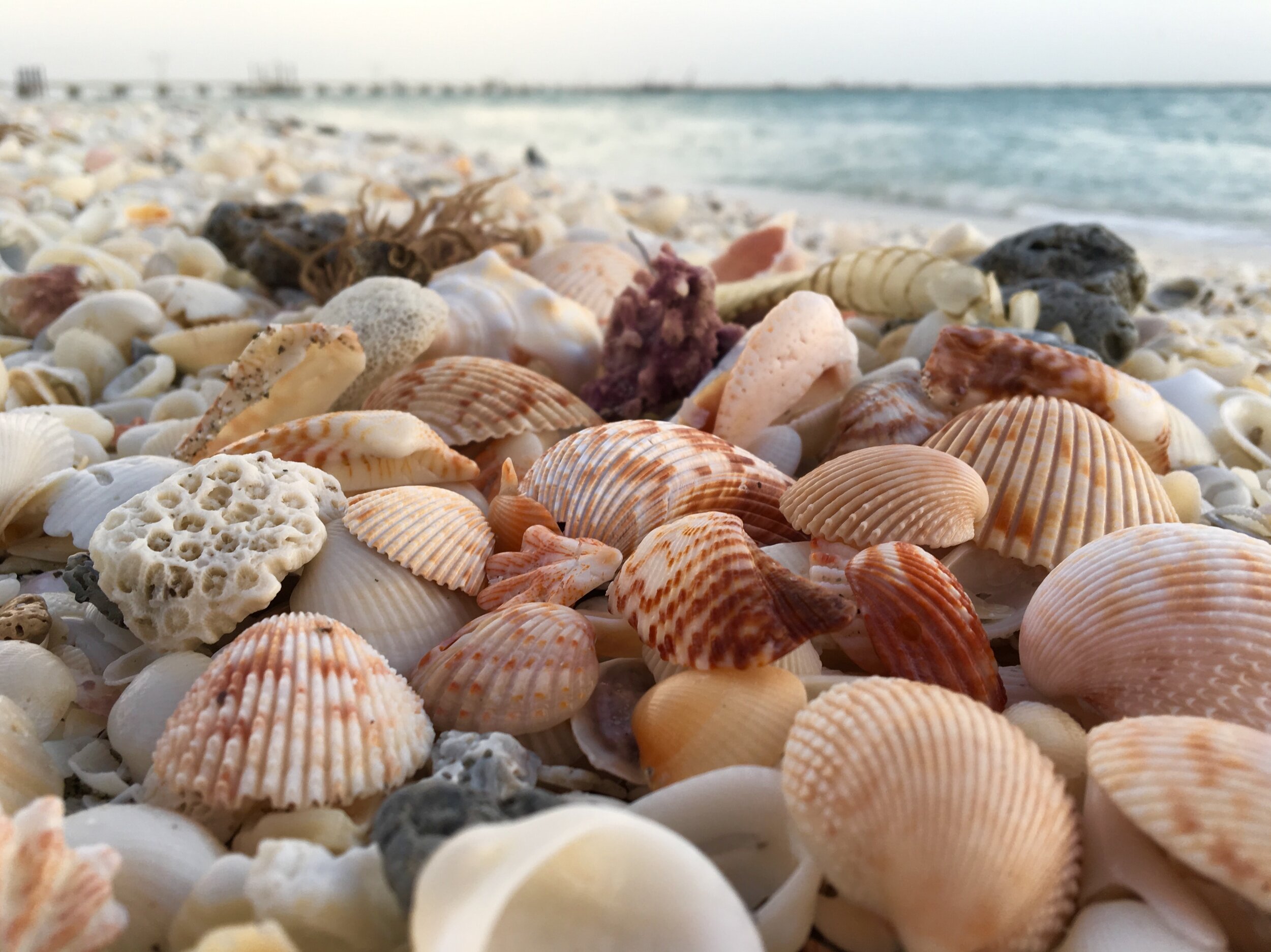Selfless Shellfish: Ecosystem Services of Shellfish Reefs
Bridget Hott
We’ve all heard the rhyme “Sally sells sea shells by the sea shore,” but surely these shells do more than just provide Sally with some pocket change. What do all the shellfish that own these shells actually do for marine ecosystems?
Seashells on the beach. Photo: Unsplash.
Sure, Sally was probably selling the colourful and intricate sea shells often associated with pristine beaches, but the real prize-worthy shells belong to the not-so-pretty shellfish: oysters and mussels. The term shellfish refers to a group of organisms that produce their own shells, primarily crustaceans and bivalves, like shrimp, crab, crayfish, lobster, clams, mussels, oysters, and scallops. Of these, oysters and mussels grow in large masses that become known as shellfish reefs.
These reefs provide many benefits besides just delicious seafood and nursery rhyme material. Shellfish reefs are well known for their ability to provide habitat for other species, maintain water quality, storm protection and cultural value.
Mussels forming a shellfish reef and providing habitat for other species, like barnacles and macroalgae. Photo: Unsplash.
Habitat
Shellfish reefs are massive components of shoreline habitats. As mussels and oysters amass huge colonies, barren and unutilized mudflats are transformed into topographically diverse environments that provide a plethora of services for all sorts of marine species. The hard shells create dynamic habitats that are a haven for intertidal invertebrates and form attachment sites for floating juveniles of sessile organisms, as well as protection and refuge from predators. All of this supports high levels of species diversity between benthic and pelagic creatures. This encourages higher rates of benthic-pelagic coupling, a term used to describe the exchange of energy, mass, and nutrients between these two communities. This plays an important role in marine ecosystems through nutrient cycling and energy transfer within marine food webs.
Water Quality
Did you know shellfish reefs actually make water better? Shellfish reefs are primarily composed of oysters, which are filter feeding animals that feed on algae floating in the water. This simple act naturally purifies water that is over-saturated with nutrients. NOAA states that “one single oyster can filter up to 50 gallons of water per day” – imagine the effect a whole reef can have! Fortunately, we don’t have to. The Chesapeake Bay, located in the middle of the East coast of the United States is a renowned site for the benefits of healthy shellfish reefs. In the 1970s, disease was running rampant in the Chesapeake Bay and aquaculture had all but come to a halt until a new species of oyster was introduced to the waters. In the 1970s, a Maryland oyster harvesting company was regularly bringing in 16 million bushels a year of oysters. By 2004 that number dropped to 26,000. Researchers noted that the introduction of a particular species of oyster reefs, along with efforts to reduce pollution and sedimentation, had turned around the fate of the bay.
Dynamic shellfish reef along a coastline. Photo: Unsplash.
Storm Protection
As previously mentioned, shellfish reefs are able to transform bare surfaces, like mud flats and sandy bottoms, into productive and sturdy ecosystems. So sturdy, in fact, that shellfish reefs are well known for their ability to protect shorelines from strong waves and big surges associated with powerful storms. Even cooler than this: by maintaining good water quality in surrounding waters, shellfish reefs encourage the growth of robust marine vegetation. The vegetation then protects shorelines even further by reducing wave energy and providing erosion control.
Clearly shellfish have a lot to offer the world, so it’s important that they are a focus in marine conservation efforts. Stay tuned this month as we discuss the many ways shellfish benefit the ocean and the world as a whole, what threats they are facing, and how we can all lend a helping hand in their conservation and restoration.
In Spotlight on Sealife we celebrate the creatures that inspire our love for the oceans and encourage us to fight for their homes. Follow this series to uncover lesser-known facts about well-known marine life, and discover weird and wonderful marine animals that you may have never come across before.
IF YOU’VE ENJOYED READING THIS ARTICLE from Bridget Hott, follow HER here @bhhott and LOOK OUT FOR MORE Spotlight on Sealife blogs.
Want to write for us? Check out our ‘Get Involved’ section.



